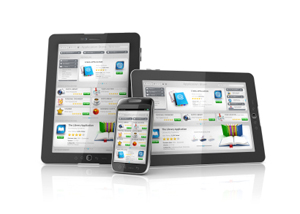It seems like just about every other month the tech blogs are abuzz with news and rumors about the latest and greatest smartphones and tablet computers. It’s hard to believe how quickly those devices have improved in recent years.
These days, smartphones and tablets are so affordable that they are nearly as ubiquitous as personal computers were just 10 years ago. The options are seemingly endless as well: iOS, Android, Windows, and BlackBerry! That’s why it’s more important than ever to make sure your Web presence is mobile-friendly.
A recent study found that about 60 percent of Americans now have smartphones, meaning more people than ever are accessing the Internet on-the-go.
While smartphones and tablets are getting better at rendering web pages, sites are still often much slower and more awkward to navigate on mobile devices than on laptops or desktop computers.
Surveys show that users expect mobile websites to be just as fast as desktop sites, which can be tricky considering that a good amount of Web surfing now gets done on slower mobile networks.
Having said that, it’s time to consider if your website is mobile optimized.
Make it easy
Mobile Web surfers want the experience to be simple and enjoyable. That means no pinching and needless scrolling just to get the text to fit in the screen. Your website should be easy and comfortable to read as soon as it loads.
Cut the fat
Mobile devices are usually much slower to load pages than more traditional computers, and those small screens can get cluttered very quickly. That’s why it’s important to stick to the basics and leave out what isn’t totally necessary.
Don’t go crazy with big photos and graphics that take too much time (and precious cellular data) to load and make finding the nuts and bolts of your service more difficult.
Just the facts
Not only does your site have to look good on those small screens, but it also means your designers have to be smart with content. By its nature, the mobile web experience is based on getting information quickly and on the go.
So think of what people who visit your site are most likely looking for. Not surprisingly, this often boils down to the basic facts—contact information, location and business hours being key.
Get social
Also remember that social media is an integral part of the mobile experience, so links to your Facebook, Twitter, LinkedIn, and Google+ profiles are a great way to introduce potential customers to you and your brand.
The trend toward mobile Web browsing seems only set to continue, especially given the fact that a whopping 80 percent of people between 14 and 29 years old regularly access the Internet on these devices. And with devices getting cheaper and better every year, the future of the Internet is looking more and more mobile.





